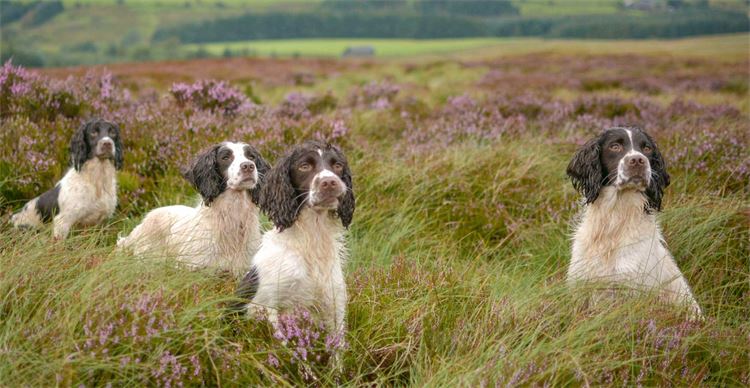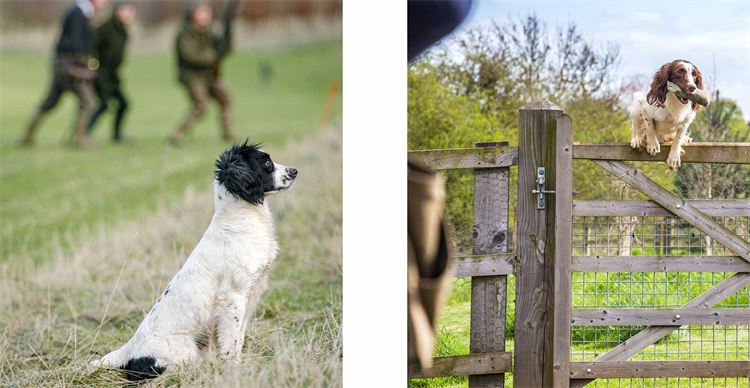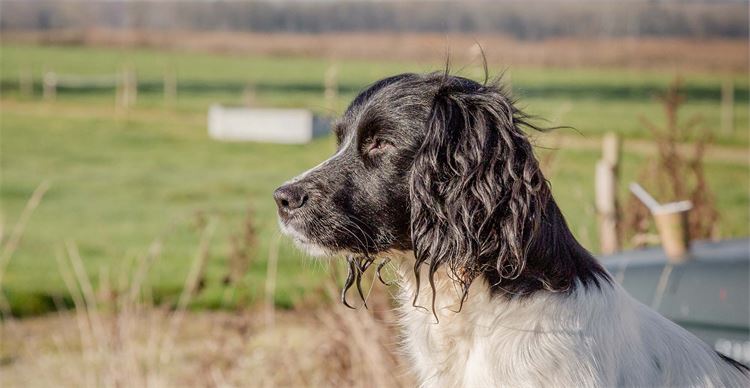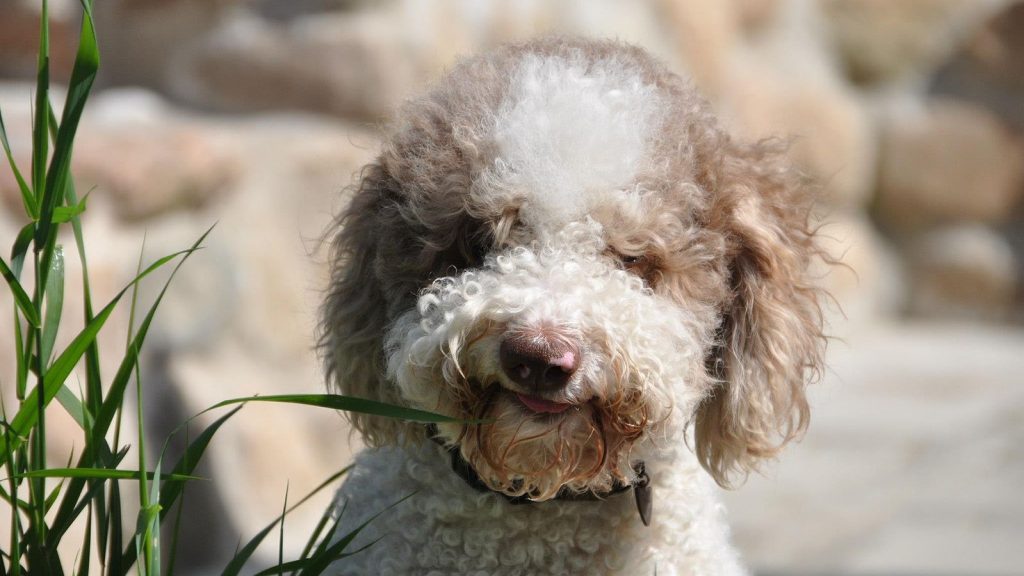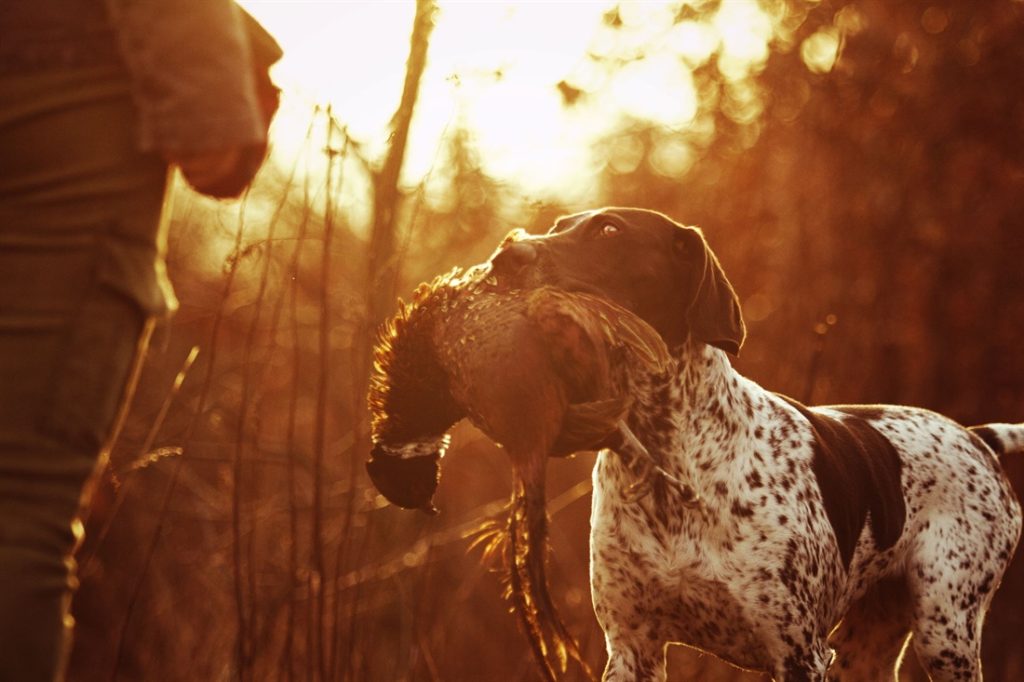English springer spaniel
We take a look at the UK’s third most popular gundog breed, the English springer spaniel. <em>(Main photo credit: Andrew Yates)</em>
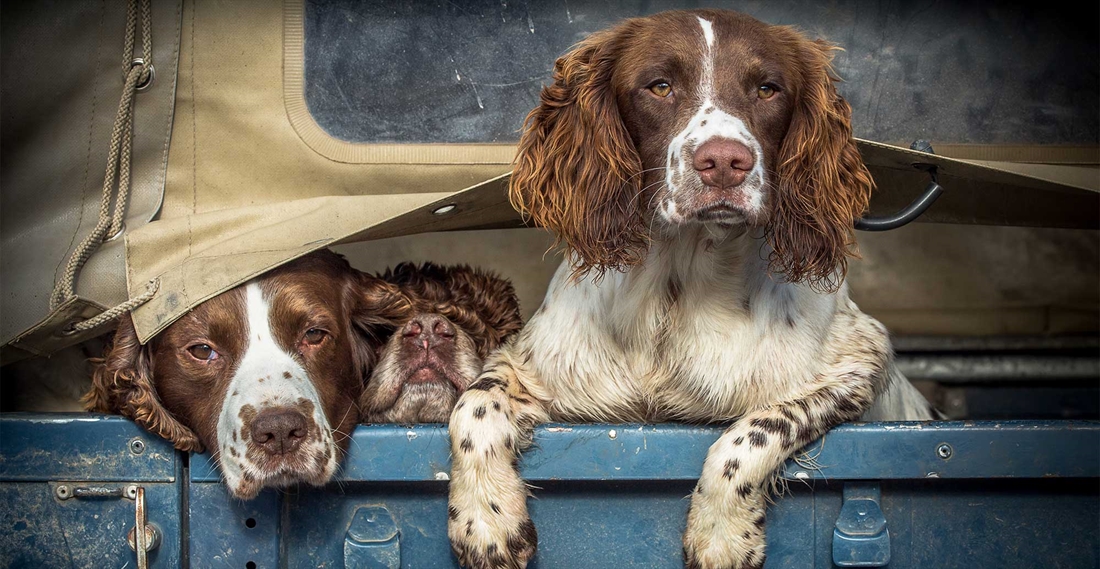
History of the English springer spaniel:
Spaniels are one of the oldest dog breeds in the world, but exactly when they first came into existence is not accurately documented. Their origin is also somewhat of a mystery, too, but there are clues to suggest that they originated in Spain and were introduced to other European countries by the Romans.
Whatever the breed’s exact history, though, it is known that spaniels have been used as canine companions to effectively hunt game for centuries. In the late 1300s, famous hunter and powerful lord of Southern France, Gaston De Foix, wrote Livre de Chasse (Book of the Chase) in which he devotes pages to hunting dogs, describing their prowess at quartering in front of the master, flushing game and retrieving from land and water – much like the working characteristics typical of today’s English springer spaniel.
To create more specialist dogs, the breed had been separated by the 1600s into two types – land spaniels and water spaniels – depending on their preferred hunting environment. Later, land spaniels were further divided into sub breeds: ‘setting’ spaniels and ‘springing’ spaniels – ‘springing’ spaniels were used for flushing small game species like rabbits or gamebirds into nets and to provide sport for falconers or greyhound handlers, before the introduction of game shooting. Setting spaniels, on the other hand, would would turn to the direction of the quarry species upon scenting it, and move in very close and undetected so that a net could be thrown over both the quarry and the dog. These are thought to be closely related to the setter breeds of today.
(Photo credit: David Egan)
Around the mid to late 1800s, this springing spaniel sub breed was divided once again, this time into springer, Sussex and cocker spaniels determined by the size of the pups from the litter. Springers were the largest and cockers were the smallest.
Another century later, in 1902, English springer spaniels were finally recognised as a distinct breed by the UK Kennel Club. As the tallest of all land spaniels, they specialised in finding and flushing game of all sizes from thick undergrowth to waiting Guns, as well as being competent at retrieving. They have been a favourite breed for many gamekeepers and dog handlers across the UK for many years.
How many English springer spaniel puppies are registered in the UK?
Of the 88,829 gundog puppies registered to the Kennel Club in 2017, 9,958 were English springer spaniels, making them the third most popular gundog breed in the UK last year.
English springer spaniel traits and characteristics:
The English springer spaniel is a highly energetic and affectionate dog with an inherent will to please. They are generally unaggressive, get on well with both pets and people, and are happy living in kennels or in the home provided they are given enough chance to exercise daily.
With the right training methods and patience, they are very trainable. Not only do they make great gundogs, but their sense of smell and trainability makes them highly sought after as sniffer dogs, working in explosive and bomb detection units.
English springer spaniel conformation:
The English springer spaniel is a medium-sized breed with a compact, strong and athletic build. It is recommended that the tails of working strains should be docked to prevent painful injuries when working in heavy cover. The English springer spaniel’s coat is usually white with brown, liver or black spots, wavy and of a medium length with feathering on the legs and undercarriage.
Average life expectancy of an English springer spaniel:
12–14 years.
English springer spaniel health issues:
Health concerns typically connected with the English springer spaniel include ear infections, eye disorders such as cataracts and entropion, food hypersensitivity, epilepsy, hip dysplasia, cancer and some heart disorders. Some health problems can be prevented or avoided with the right medical checks by a veterinarian.
Feeding and nutrition – from the Chudleys’ nutritionist:
“As a nutritionist, one designs a diet first and foremost to meet all the nutrient requirements to support a long, active and healthy life.
“For working breeds, fundamental nutrient requirements vary very little, if at all. There may be subtle trend differences between the breeds in terms of certain conditions that are more prevalent in one particular breed over another that may be helped by using appropriate functional nutrition.
“The key differences in nutrient requirements for working dogs stem from the duration and intensity of the work undertaken. The higher the workload, the more energy your dog will require. A very active dog will therefore need to eat more food, and as a result will get more of all the other nutrients it requires, such as protein and vitamins.
“It is important to know where that energy needs to come from. Sprint work requires a diet consisting of more carbohydrate and some fat – a diet of around 22–25% protein and up to 14% fat is preferred – whereas a dog working long days on a moor will rely more on fat reserves – a diet with 24%+ protein and 14%+ fat works best.
“Finally, when it comes to choosing the size of the piece of food, studies have proven that all breeds prefer a kibble of around 14–16mm in diameter.
“So, choose a diet to suit your dog’s workload and type, and one that provides those functional nutritional aspects as well.”
Why do English springer spaniels make good gundogs?
For a long time, the breed has been a favourite in the shooting field amongst many gamekeepers, pickers-up and Guns alike. It is a joy to watch a well trained English springer spaniel quarter through heavy cover in search of game, ease into the flush, or pick-up at the end of a drive with unrelenting enthusiasm.
They are considered one of the most versatile of gundog breeds, and can be a great companion for use in walked-up shooting, driven days in the beating line or on the peg, and even wildfowling.
They have developed something of a reputation for being a bit wild or scatty on occasion, and can be very stron-willed with a high prey drive. This can put people off having an English springer spaniel, but these problems can be eliminated by using the right training methods and being patient.
Related Articles
Get the latest news delivered direct to your door
Subscribe to Gundog Journal
Unlock the full potential of your working dog with a subscription to Gundog Journal, the UK’s only dedicated magazine for gundog enthusiasts. Published bi-monthly, this authoritative resource delivers expert training advice, in-depth interviews with top trainers and veterinary guidance to help you nurture a stronger bond with your dog.
With stunning photography and thought-provoking content, Gundog Journal is your essential guide to understanding, training and celebrating your working dog.
Save 10% on shop price when you subscribe, with a choice of packages that work for you. Choose from Print & Digital or Digital only with each journal delivered directly to your door or via the app every other month, plus access to past issues with the digital back issue library.






